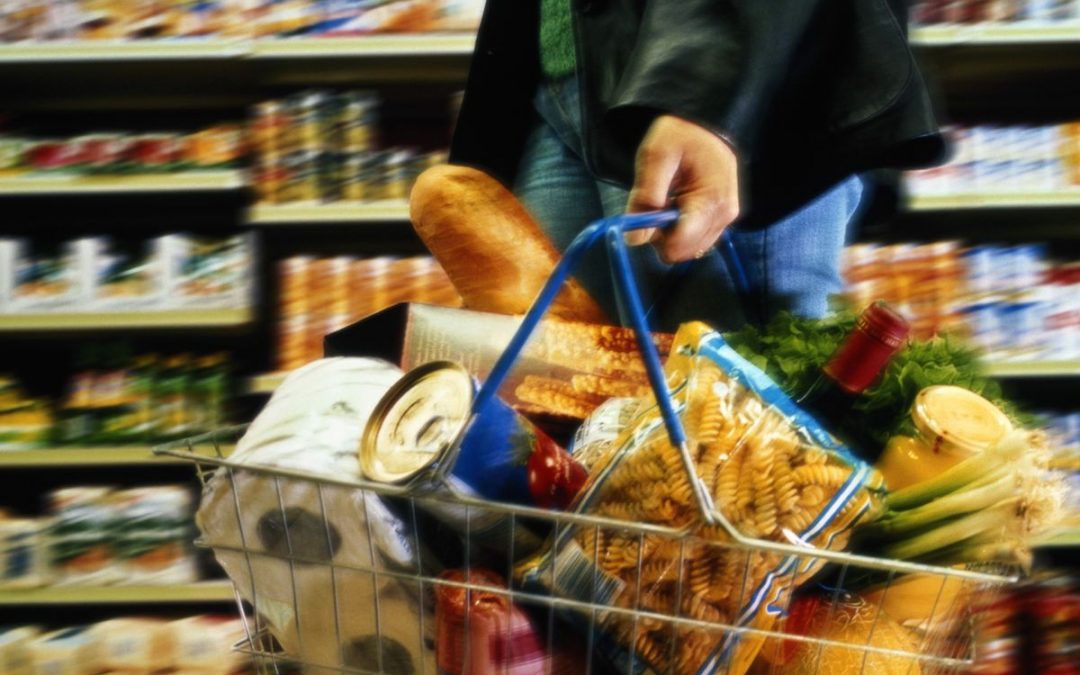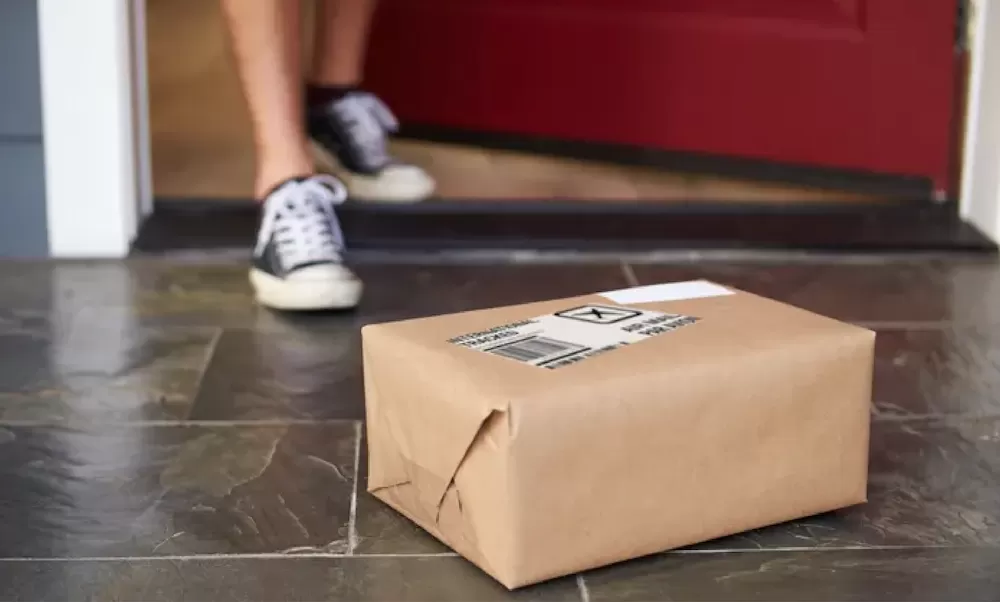During a time when everything seems to be moving online, consumers have been slow to adopt online grocery shopping. In 2019, 81% of U.S. consumers said they’ve never ordered groceries online and only 11% said they do so at least once a month. But the rate at which consumers are shopping online has ramped up in recent years, with sales up 15% in 2019.
By 2025, it’s predicted that online food and beverage sales will reach $143 billion according to FMI and Nielson, which represents 30% of omnichannel food and beverage spending. More recently, we’ve witnessed the slow progression of online grocery shopping accelerate as consumers try to limit trips to the store due to stay-at-home orders. Online grocery sales hit a record high in April, with consumers spending $5.3 billion on pickup and delivery orders, a 37% increase from March, and the total number of online grocery orders increasing by one third.
As retailers work to boost their online presence and consumers begin to take advantage of online grocery expansion, trends are emerging as to where online grocery shopping will go next—and the industry should take notice.
Online Grocery Shopping Now Spans Generations
While Millennial online shopping habits have held strong, both Gen X and Baby Boomer generations have increasingly embraced online grocery shopping in recent years. The percent of Gen X consumers shopping online for groceries has grown considerably, from 24% in 2017 to 40% in 2019. Although less drastic, the number of Baby Boomers shopping online has also increased, up to 18% in 2019 from 12% in 2017.
Although younger generations have been the drivers of online grocery, it’s clear that older generations are adopting this new way of grocery shopping more and more. Factors like mobility, transportation, and the ability to take their time as they shop online may all be at play.
Recent stay-at-home orders are likely to boost this trend as more seniors and middle-aged consumers try to limit their in-person grocery trips. As retailers continue to build out their e-commerce solutions, the opportunity to attract more online customers goes beyond younger shoppers, and these older generations shouldn’t be ignored.
Integrating Discovery into the Consumer’s Food Journey
Unlike the in-store experience, online grocery shopping lacks the same opportunity for discovery that a shopper might have as they walk aisles looking for a product amongst other unique finds. Instead, online grocery shoppers are forced to search and scroll until they (hopefully) find the product they’re looking for without seeing much variation in choice or they type in the exact item that they are looking for, leaving very little opportunity for impulse buys.
And with almost half of shoppers wanting retailers to provide them with product suggestions that match their tastes and preferences, it’s important for grocers to find solutions that allow them to replicate this sense of discovery online. But in many cases, grocers are falling short in inspiring and aiding online consumers in discovering the right products for them.
Newer companies, like Thrive Market, are capitalising on this desire as they build their online experiences around discovery. First-time Thrive shoppers are asked to take a quiz around their personal preferences, which the company then uses to curate a more personalized shopping experience for their customers. Providing a more personal online experience may even boost the bottom line.
On average, retailers see a 6.4% increase in sales by offering personalized product suggestions, with 17% of online shoppers saying they were enticed to buy another item online after seeing a retailer suggestion based on their prior purchases. Building on this idea even further, retailers can employ technologies like SwiftERM, which can provide personalized product choices based on their own buying habits, along with a smart shopping list based on food or dietary preferences, giving shoppers the discovery and personalization they seek.
Big Grocery Players Dominate the Online Space
Big box retailers like Walmart and Amazon in the US, and Tesco, Sainsbury, Asda, Morrisons, M & S, Aldi and Lidl in the UK, are dominating the online grocery market as they continue to build out their online offerings. In fact, Walmart and Amazon combined hold more than half of the market share for online grocery, whereas regional supermarkets only accounted for 22% of market share.
mers, they’re forced to rely on larger third-party companies like Instacart, giving up the opportunity to create their own branded digital touchpoints. Currently, more than 50 regional grocers across 30 states partner with the company to provide pickup and delivery service, including Food Lion, Publix, and Wegmans, among others.
Unlike larger grocery players who are investing heavily in in-house technology to aid their online growth, regional grocers often lack the capital needed to build their own e-commerce solutions. But smaller grocers are teaming up with technology companies in order to enhance their online food shopping experiences with personalized product suggestions.
By partnering with tech companies to improve their online stores, smaller retailers have the opportunity to really define their own online shopping experience for customers. And with supermarkets seeing the highest rate of first-time use among online grocery shoppers, they have the ability to capture more of the online market share by providing a better experience from the start, before these consumers turn to larger retailers.
More Ways to Receive Online Grocery Purchases
Grocery pickup is expected to become a $35 billion dollar business this year, thanks in part to rapid expansion by companies like Walmart and Kroger. Millennials, in particular, are embracing the service with 50% stating that they use grocery pickup services at least once a week. Overall, 46% of online grocery shoppers receive their orders by pickup at the store with 26% choosing to have their orders delivered to their home.
But still, grocery pickup comes with its own set of challenges, and grocers are working to eliminate them with innovative solutions. Some retailers are partnering with tech companies that can alert them when a shopper is in the vicinity and entering the store’s parking lot, cutting down on long wait times that may lead a consumer to shop elsewhere. Others are testing out the idea of pickup lockers away from the store and self-serve automated pickup kiosks.
But even as grocery pickup continues to grow, larger retailers like Amazon and Walmart are making an effort to drive more consumers to delivery. Last year, Amazon moved to eliminate the monthly fee for Amazon Fresh and make 2-hour grocery delivery service free for Prime members.
Similarly, Walmart rolled out their unlimited online grocery delivery membership nationwide giving consumer’s the option to pay a yearly membership fee or a monthly subscription price. As consumers increasingly adopt new ways of receiving their online orders, grocers are looking for efficient ways to keep up with the growing demand.
The Rise of Micro-Fulfillment Centers to Aid Online Grocery
With a recent surge in online grocery orders, the limitations of grocery fulfillment are being amplified as retailers try to keep up with the heightened demand. Traditionally, grocers have embraced the in-store click-and-collect model as a way to fulfill online orders, but packing orders in-store with products distributed across thousands of square feet is proving to be inefficient and not scalable.
Realising the constraints of the in-store fulfillment model, more grocers are turning to a new method to meet consumer demand: the micro-fulfillment center. These small warehouses offer up automated online order fulfillment with the ability to fill orders quicker and take up less square footage than traditional store-based fulfillment.
Across the globe, grocers are beginning to test out their own micro-fulfillment centers. Last month, micro-fulfillment company, Ocado, launched its first North American customer fulfillment center in Ontario, fulfilling orders for grocer Sobeys, which operates Viola, an e-commerce service in Toronto.
U.S.-based Kroger has also signed on with Ocado, planning to launch 20 fulfillment centers in Ohio next year. And with demand soaring, auto fulfillment companies like Dematic, Alert Innovations, and Takeoff Technologies are all seeing an uptick in interest from grocers and have even begun pilot programs with retailers like Walmart and Albertsons.
As new trends emerge in the world of online grocery shopping, the opportunity for big and small retailers alike is up for the taking. With online grocery ordering steadily increasing year-over-year, grocers will have to find new ways to create a better online shopping experience for their customers. SwiftERM can help retailers differentiate themselves from the competition and provide consumers with a more personalised solution to help consumers maintain their loyalty and affinity to that retailer on their online food journey.





One Response
This article is informative and helpful, thanks.